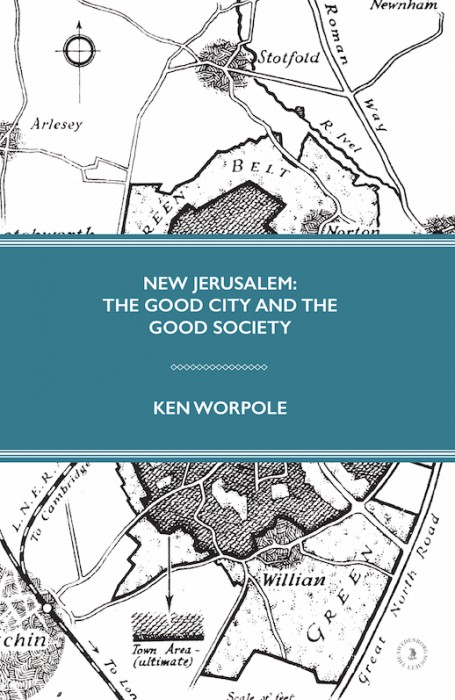The New Jerusalem: The Good City and the Good Society by Ken Worpole (Swedenborg Society. 90 pages, priced £6.95)
Review by Travis Elborough.
Thomas More’s original ideal society, the island of Utopia, is really ‘nowhere’ or ‘no place’, though a ‘nowhere’ quite specifically located in the text somewhere in the New World of the Americas. I only came upon these etymological and geographical pub quiz titbits a few years ago. It was then that I finally got round to reading More’s classic work while researching a book about the sale of London Bridge to America. As any fan of Hilary Mantel’s Wolf Hall can probably tell you, More’s head wound up on a spike on London Bridge. And if not quite the same bridge, then its later nineteenth century namesake by John Rennie was flogged to an oil baron and shipped out to a notably dusty corner of Arizona in 1968.
But as Ken Worpole’s svelte, if informative and beautifully executed book on Utopian settlements records, when it comes to the transmission of ideas about ideal societies, the transatlantic traffic went in both directions. It was the arrival of fresh thinking from America about the urban environment that helped spawned the birth of the Garden City movement in this country.
The London-born Ebenezer Howard, who gave his first public lecture on the concept of the Garden City, following the publication of his hugely influential To-Morrow: A Peaceful Path to Real Reform at the Rectory Road Congregational Church in Stoke Newington on 3 December 1898, had been seduced by the dream of frontier life some twenty-seven years earlier and emigrated to Nebraska. As a stenographer with no practical farming skills, he made for a dreadful plainsman. Within a year he had decamped to Chicago, and by 1876 was back in London. But the real spur for Howard’s espousal of a new kind of city that combined all the benefits of the town with the country was the arrival in 1888 of a futuristic novel by the American writer Edward Bellamy, entitled Looking Backward: 2000–1887. If little-read today, this book was a sensation upon its publication, selling in the millions and translated into as many as twenty different languages. It inspired not only Howard but also William Morris, who penned News from Nowhere as an agrarian response to Bellamy’s own rather technocratic, not say almost totalitarian, Socialist vision of Boston in the 21st century. (Morris consciously tipped his hat to More in his title, as Worpole notes.)
Worpole’s book, published in collaboration with the Swedenborg Society, ranges widely over the differing convictions, some religious or philanthropic, others political or commercially expedient, that led to the creation of land colonies, industrial villages and Garden Cities in the closing years of the nineteenth and opening decades of twentieth centuries and is a near perfect primer on the subject. More compellingly, perhaps, he manages to find space to consider contemporary attempts to build new Jerusalems, surveying the creation of ecologically sustainable co-housing initiatives in Dorset and Cambridge and Liverpool’s Granby Four Streets community land trust which was shortlisted for the 2015 Tuner Prize.
Buy a copy here.
